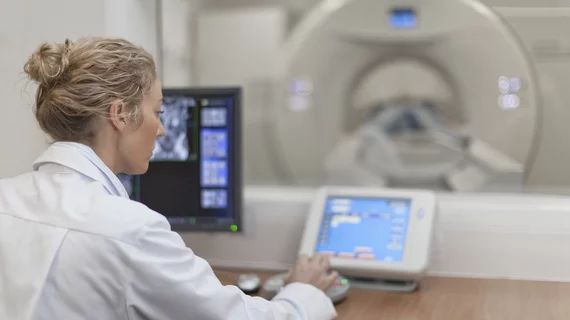The United States imaging industry has delivered nearly 3.7 million fewer CT exams than anticipated in 2020, according to an analysis published Wednesday.
During the pandemic’s worst points, providers recorded roughly 38,000 fewer such scans in an average day, and areas with higher population density and greater unemployment rates suffered steeper declines. By Sept. 30, CT visits hovered at about 84% of anticipated volume, representing a “blunted recovery,” experts detailed in JACR.
“These data are potentially important because CT is a common diagnostic tool for many clinical indications and has a substantial effect on clinical decision-making,” Matthew Davenport, MD, with the Department of Radiology at Michigan Medicine, and colleagues from several other institutions wrote Oct. 21. “The fact that CT volume never recovered to predicted levels suggests that a substantial proportion of reduced care likely was not just deferred, but was not provided at all,” they added later.
To reach their conclusions, researchers analyzed data from 2,398 practices—representing all 50 states, in hospitals, academia and freestanding imaging—participating in the American College of Radiology’s Dose Index Registry. Data covered Jan. 1 up through the end of September, with actual 2020 volume compared up against previously projected CT trends for the year using 2019 data.
All told, U.S. imaging providers recorded nearly 16.2 million CT exams through September, about 19% fewer than the more than 18.9 million projected. States on average reached their bottoming out point about 32 days after their emergency declaration and 12 days after stay-at-home orders. Average low point at that stage was a roughly 53% drop in CT volume, the research team reported.
Davenport et al. said it’s unlikely that a decrease in non-COVID-19 diseases led to this sizable drop in CT scans, while offering four reasons for the slow rebound.
“The incomplete blunted recovery likely is due to many factors, including but not limited to: safety concerns of patients and healthcare workers regarding reengaging routine care, social distancing policies constraining access, a decline in staff who may have been furloughed due to the economic impact of the pandemic, and loss of health insurance by prospective patients,” the authors concluded. “Further study investigating the indirect clinical impact of temporarily discontinuing clinical services are needed.”
Read more of their pre-proof analysis in the Journal of the American College of Radiology here.

